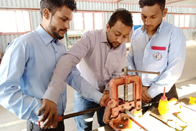Office Address
Lahore Pakistan
Call us toll free
+92 302 6803102
Working Hours
09 AM - 03 PM



